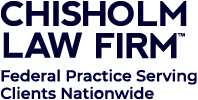Completing the Federal Trademark Application
The federal trademark application will require you to provide the following information in order to submit your federal trademark application for Consideration:
1. Ownership Information. You will need to list the owner(s) of the mark. The owner(s) can be an individual(s) or a business. During the legal consultation we schedule with clients of our law firm, we carefully analyze their legal and financial situation to let them know if it would be in their best interest to own the trademarks in their name as an individual, in the name of their business or if we need to form a separate holding company for the trademarks. This all depends on a number of factors such as their individual level of exposure to liability, their long-term and short-term goals for the trademarks, tax implications, etc.
2. Contact Information. You will need to provide the USPTO with the primary contact for the application. This information is public record. Most of our clients choose to have our law firm listed as the contact so that they do not have to worry about the examining attorney calling them personally to ask questions about the application while it is under review. Many simply do not want their home address or personal contact information made public. Other clients want to make sure that all official correspondence comes to us so that they are not responsible for missing an important phone call or email from the government which can cause their application to be terminated because they did not respond by the stated deadlines.

3. Drawing / Depiction of the Mark. You will have the choice to register your mark as a “standard character” drawing or as a “special form” drawing. Usually, if you are protecting the name of your nonprofit, you would use a standard character drawing. This means that the words or numbers themselves would be owned by you. For example, the name “Chisholm Law Firm Foundation” would be owned by the nonprofit if they used the standard character drawing. On the other hand, if you want to own your logo or if the name of your nonprofit’s name is written in a special font or design, you would need to file a separate application and choose the special form drawing. Special form drawings, in particular, are governed by very specific rules. I would recommend that you at least speak with a trademark attorney to make sure you are following the guidelines even if you were planning to complete the special form drawing aspect of the application yourself. You can search online for “trademark attorney in Los Angeles” (or insert your city) to find a lawyer in your city. Later in this book, I discuss the things you want to look for when hiring an attorney to help you make a wise decision.
4. Filing Basis. You will have the choice of stating that you are currently using the mark or that you plan on using it in the future. There are specific regulations regarding the criteria you need to meet for each of these. For example, for the “intent to use ” filing basis, you must have the good faith intent to actually use the mark. It cannot be something that you plan to register and then never actually use it in commerce. For the “in use” application, you will need to share the actual dates when you first began using the mark in commerce and provide supporting Evidence.
5. Goods/Services. You will need to show that you were using your mark (or plan to use it, depending on the filing basis that you choose) with actual goods or services in commerce. This means that if you are filing a trademark application to own your nonprofit’s name, you would need to list the services that you will offer when using your nonprofit’s name in the marketplace. Lawyers do this by conducting legal research and evaluating the 45 International classes (categories) that the USPTO uses to classify goods and services. You would then find the class or category that includes the charitable services you plan to offer and list it in your application along with a description of the specific services that you offer. You can register to own your name in as many categories as possible. However, there is a separate application fee for each international class (category) that you apply to own your name in.
6. Specimen. You will also need to include a specimen with your application. The drawing that we discussed earlier shows the mark itself (e.g., “Chisholm Law Firm Foundation”). The specimen shows the mark attached to actual goods (e.g., “Chisholm Law Firm Foundation” printed on a T-shirt) if you are applying to own the mark in an international class for apparel.
Call us today!
1-800-254-6140
Quick Links
About Us
Resources
1-800-254-6140
info@chisholmfirm.com
1-800-254-6140
info@chisholmfirm.com

